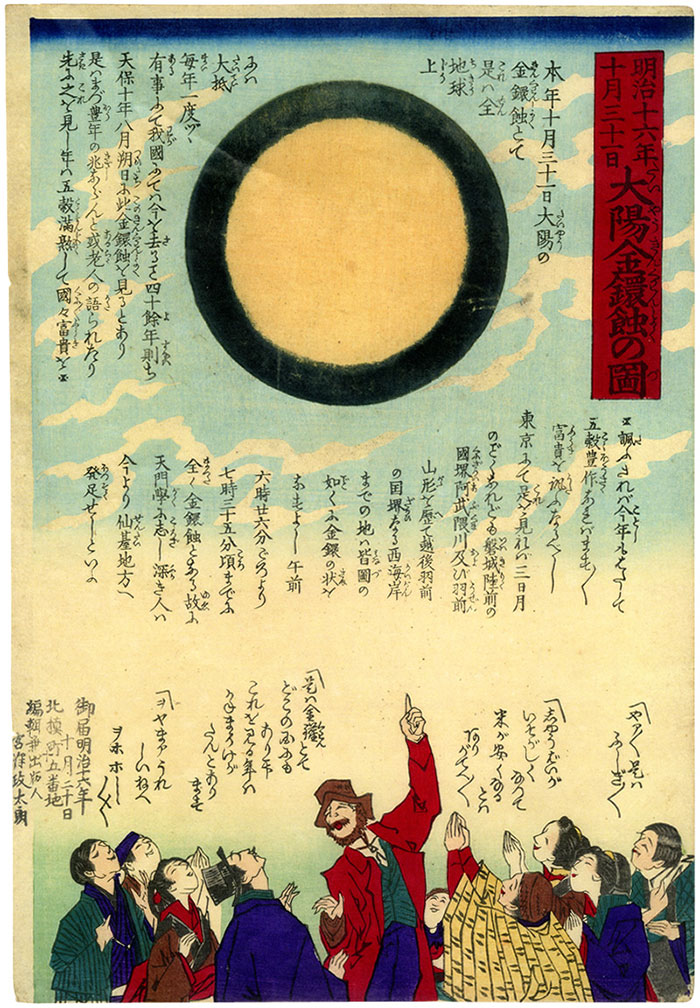“Picture of the Annular Eclipse of October 31, Meiji Era 16” (from the Celestial Curiosities Nishiki-e Collection)
Historical illustration・

| First Publication | 1883 (16th year of the Meiji Era) |
|---|---|
| Author/Artist | Masataro Miyazawa |
| Credit | Collection of the National Astronomical Observatory of Japan |
One of the “The Celestial Curiosities Nishiki-e Collection.” “Nishiki-e” referees to this traditional Japanese style of multi-color printing using wood-blocks. This insert released before the annular eclipse on October 31, 1883 (16th year of the Meiji Era) paints the atmosphere of the people ushering in the eclipse in vivid colors. Unlike today, references were scarce; the interior and exterior colors of the eclipse depicted here are reversed.
In the description it explains that an annular eclipse occurs somewhere on the Earth almost every year. It continues on to say that one had occurred in Japan 40 years earlier (1839, 10th year of the Tenpo Era). It’s written that elderly people said that at that time it had been an omen for a prosperous year (note: source not cited); so this year would also be prosperous.
It’s written that because the region where the annular eclipse could be seen extended from the Abukuma River, forming the border between Iwaki and Rikuzen, to the west shore on the border between Echigo and Uzen, that people hoping to conduct astronomy were departing for the Sendai region. But it seems that, unfortunately, during the time of the eclipse Sendai was cloudy.
At the bottom of the picture, phrases for an auspicious year are written, making it a picture of people looking up and hailing the eclipse “Thank you for making work busy and rice cheap,” “Oh, delightful. Hahaha.” and so on.
Up through the Edo Era, eclipses were often seen as ill omens, but this content tries to erase that. The people’s enthusiasm reminds us of the guests’ enjoyment at modern astronomy shows.
(Translator's Note: In addition to the standard Gregorian Calendar, Japan continues to use a reign era calendar. The different eras are defined by changes in the Japanese government, and accompanied by changes in Japanese society.)
Translation by: Ramsey Lundock (NAOJ)